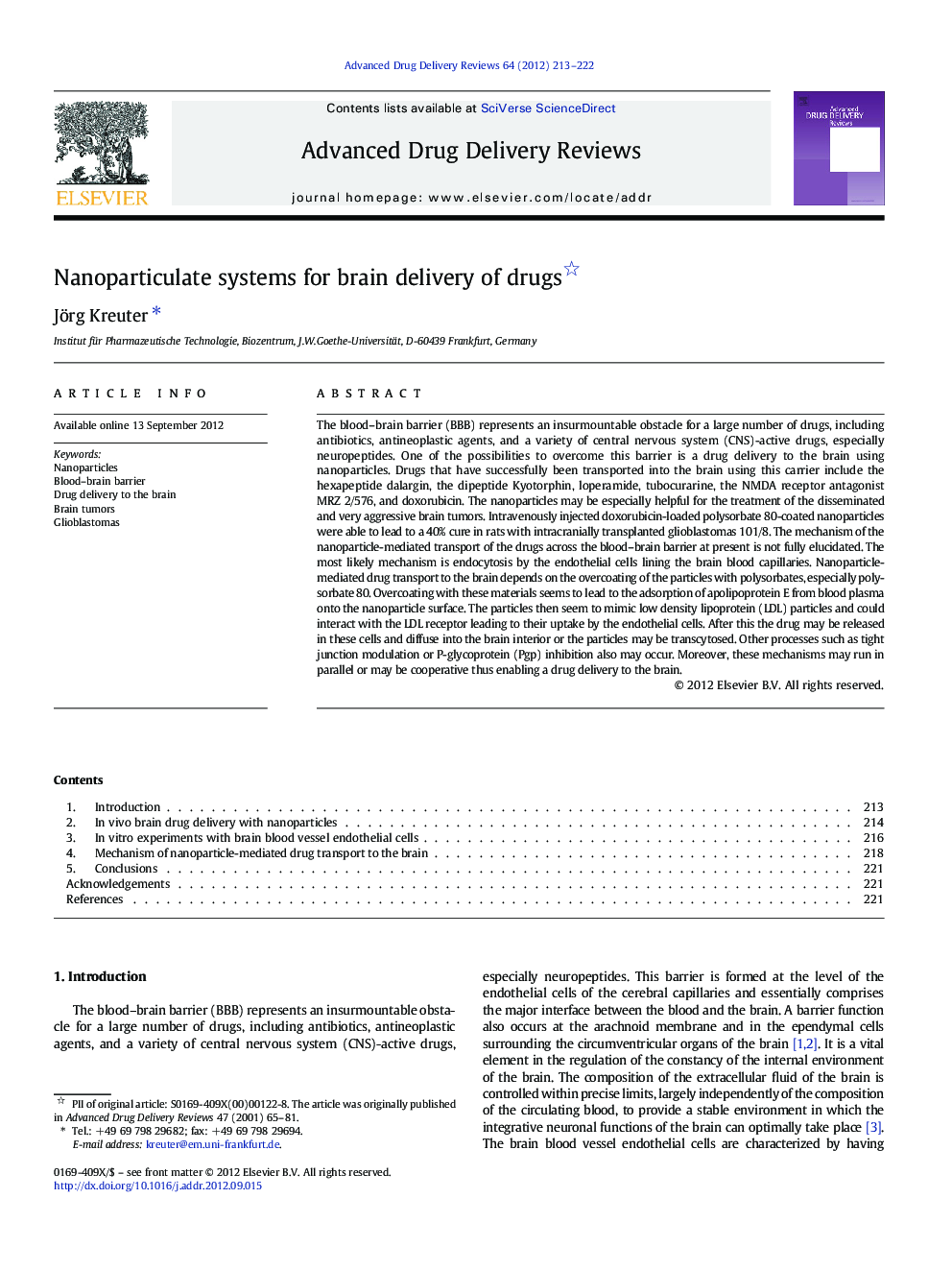| کد مقاله | کد نشریه | سال انتشار | مقاله انگلیسی | نسخه تمام متن |
|---|---|---|---|---|
| 2072213 | 1078908 | 2012 | 10 صفحه PDF | دانلود رایگان |

The blood–brain barrier (BBB) represents an insurmountable obstacle for a large number of drugs, including antibiotics, antineoplastic agents, and a variety of central nervous system (CNS)-active drugs, especially neuropeptides. One of the possibilities to overcome this barrier is a drug delivery to the brain using nanoparticles. Drugs that have successfully been transported into the brain using this carrier include the hexapeptide dalargin, the dipeptide Kyotorphin, loperamide, tubocurarine, the NMDA receptor antagonist MRZ 2/576, and doxorubicin. The nanoparticles may be especially helpful for the treatment of the disseminated and very aggressive brain tumors. Intravenously injected doxorubicin-loaded polysorbate 80-coated nanoparticles were able to lead to a 40% cure in rats with intracranially transplanted glioblastomas 101/8. The mechanism of the nanoparticle-mediated transport of the drugs across the blood–brain barrier at present is not fully elucidated. The most likely mechanism is endocytosis by the endothelial cells lining the brain blood capillaries. Nanoparticle-mediated drug transport to the brain depends on the overcoating of the particles with polysorbates, especially polysorbate 80. Overcoating with these materials seems to lead to the adsorption of apolipoprotein E from blood plasma onto the nanoparticle surface. The particles then seem to mimic low density lipoprotein (LDL) particles and could interact with the LDL receptor leading to their uptake by the endothelial cells. After this the drug may be released in these cells and diffuse into the brain interior or the particles may be transcytosed. Other processes such as tight junction modulation or P-glycoprotein (Pgp) inhibition also may occur. Moreover, these mechanisms may run in parallel or may be cooperative thus enabling a drug delivery to the brain.
Journal: Advanced Drug Delivery Reviews - Volume 64, Supplement, December 2012, Pages 213–222